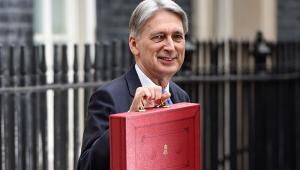Eight of the 15 councils that responded said they would be using it to build new homes. Two said they would be borrowing more to refurbish properties as well as build.
Thousands of homes were planned by the three councils that gave PF an indication of what they intended to do with their new borrowing capacity.
The London Borough of Hounslow told PF that it will be looking to borrow roughly £50m, which it says will be used initially to provide around 400 new homes. It will also borrow to refurbish existing housing stock.
Steve Curran, leader of Hounslow council, said: “This will give Hounslow a massive boost and greater certainty for delivering our housing pledge of building 5,000 new homes by 2022.
“The funding will provide new council homes for local people, reduce the number of people on our housing waiting list and achieve our goal of delivering good quality homes for our residents.”
The mayor of Hackney Philip Glanville said he believed that by 2025 his council will be able to build between 700 and 900 additional council homes – the highest number since the 1970s and 80s.
Although, he warned: “We must also strike a note of caution.
“The chancellor did not announce a single penny of funding to build council housing – only the ability to prudently borrow our own money, against our assets, to finance the expensive business of constructing homes.
“This means we’ll still need to find permanent ways to invest in this, and it won’t be a silver bullet for the housing crisis.”
Northampton Borough Council said it wants to borrow a further £47m, which it believed will yield 523 units over three years.
Of all the respondents looking to increase their borrowing, four said they would be doing so with immediate effect.
Sedgemoor District council told PF it had “no immediate plans to borrow more at this stage” but that the cap removal gave it that flexibility if “the business case stacks up” in the future.
While the vast majority of respondents were planning to borrow more, some said further reform was needed to tackle the housing crisis.
Simon Miller, cabinet member for economic growth and high streets at Waltham Forest, said: “Although welcome, lifting the cap is not sufficient in itself to increase the supply of new homes. Greater flexibility over rents and more government grant funding for new affordable homes is also key.”
Councils such as Barking and Dagenham and Southwark also urged the government to look at allowing councils 100% retention of Right to Buy receipts and the ability to increase social rents.
Bethanie Roughley, senior researcher at the think-tank Localis, warned that local authorities will struggle to build the volume of homes needed due to a skills shortage.
She said: “If the intention to build is there, we must acknowledge the capabilities are lacking. And one of the major barriers facing local authorities as builders is the impending skills shortage in the construction industry.”
This skills shortage, Roughley argued, will be “exacerbated” by the government’s policy of reducing low-skilled immigration after Britain leaves the EU.
Collectively the 15 in PF's survey said they had borrowed £2.2bn against their HRA accounts since then.
Borrowing has so far been done primarily through the Public Works Loan Board, with a small amount coming from banks, general fund cash – council funds that are not the HRA - and inter authority lending, the councils told PF.
Prime minister Theresa May announced she was scrapping the HRA borrowing cap in early October at the Conservative party conference. The cap was removed by the end of last month.
Recent analysis by the Local Government Association found that a council housebuilding boom could generate £320bn for the wider economy in England and Wales.
The Office for Budget Responsibility recently predicted that the removal of the HRA cap would result in only 9,000 more homes by 2023-24.
The councils that responded to the PF survey included Southwark, Hackney, Luton, Hounslow, Northampton, Guildford, Portsmouth, Waltham Forest, Kingston, Barking and Dagenham, Croydon, Basildon, Sedgmoor and Brent, Cheshire West and Chester Council.











